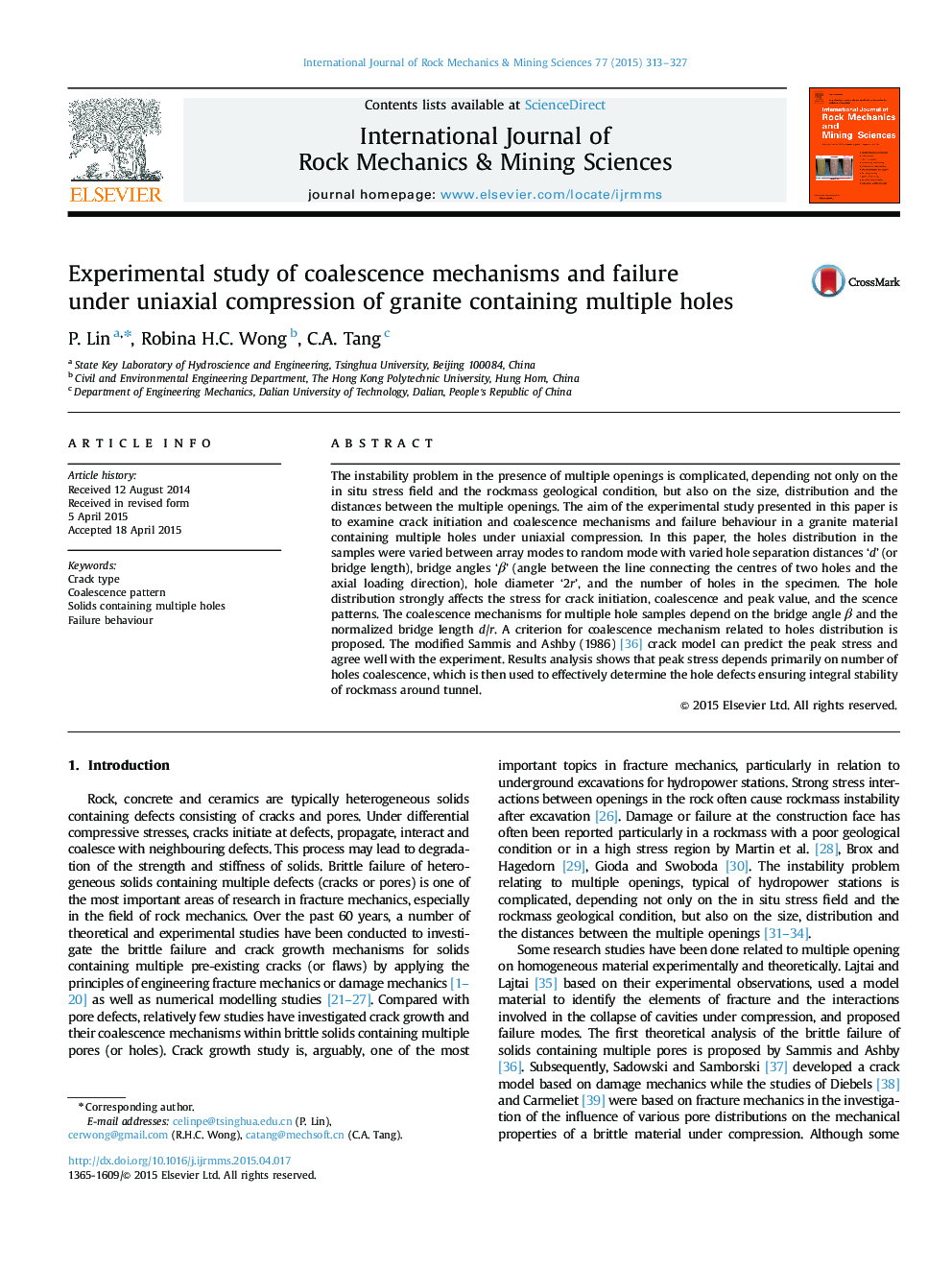| Article ID | Journal | Published Year | Pages | File Type |
|---|---|---|---|---|
| 7206553 | International Journal of Rock Mechanics and Mining Sciences | 2015 | 15 Pages |
Abstract
The instability problem in the presence of multiple openings is complicated, depending not only on the in situ stress field and the rockmass geological condition, but also on the size, distribution and the distances between the multiple openings. The aim of the experimental study presented in this paper is to examine crack initiation and coalescence mechanisms and failure behaviour in a granite material containing multiple holes under uniaxial compression. In this paper, the holes distribution in the samples were varied between array modes to random mode with varied hole separation distances 'd' (or bridge length), bridge angles 'β' (angle between the line connecting the centres of two holes and the axial loading direction), hole diameter '2r', and the number of holes in the specimen. The hole distribution strongly affects the stress for crack initiation, coalescence and peak value, and the scence patterns. The coalescence mechanisms for multiple hole samples depend on the bridge angle β and the normalized bridge length d/r. A criterion for coalescence mechanism related to holes distribution is proposed. The modified Sammis and Ashby (1986) [36] crack model can predict the peak stress and agree well with the experiment. Results analysis shows that peak stress depends primarily on number of holes coalescence, which is then used to effectively determine the hole defects ensuring integral stability of rockmass around tunnel.
Keywords
Related Topics
Physical Sciences and Engineering
Earth and Planetary Sciences
Geotechnical Engineering and Engineering Geology
Authors
P. Lin, Robina H.C. Wong, C.A. Tang,
